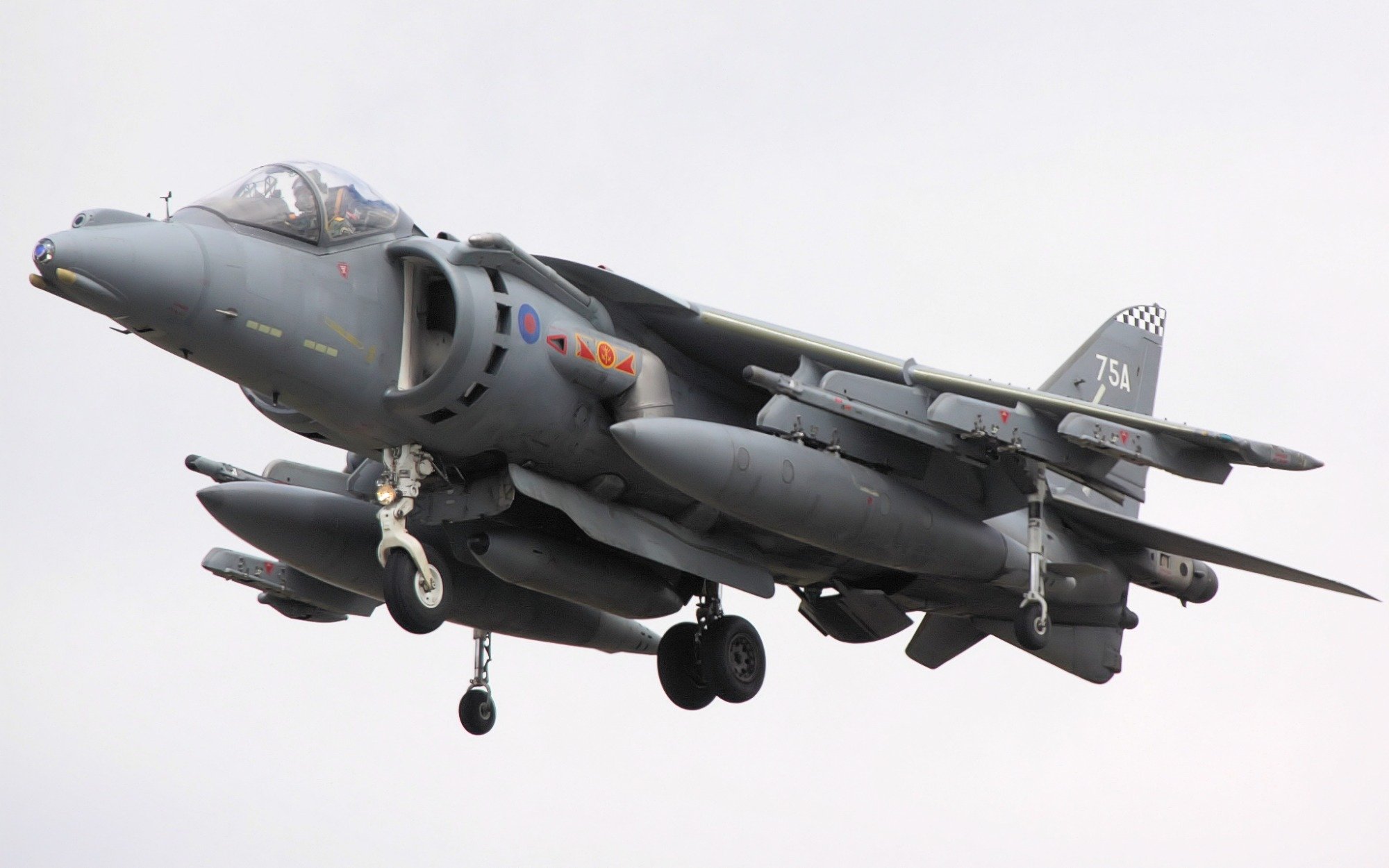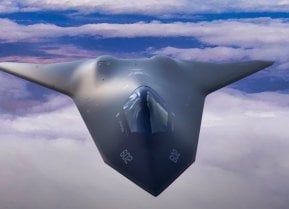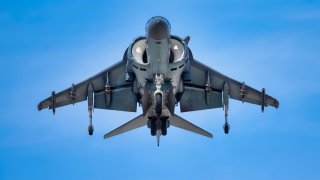The Harrier II Fighter Will Keep Flying (Just Not for America)
As a rugged and reliable aircraft, the AV-8B Harrier was routinely deployed onboard amphibious assault ships and simple forward operating bases since the 1980s. But now it is headed into the history books - except for one nation.
Summary and Key Points: Earlier this spring, the last U.S. Marine Corps aviators completed training on the McDonnell Douglas AV-8B Harrier II, a V/STOL tactical attack aircraft in service for 40 years. The final Harrier squadron, VMA-223, will transition to the F-35B Lightning II by September 2026. Meanwhile, Spain will keep its Harrier fleet operational until at least 2030, with seven currently deployed on the flagship Juan Carlos I.

-Spain is considering the F-35B as a replacement but faces potential delays due to a backlog of orders.
-The Harrier II, praised for its role in the 1991 Gulf War, remains a capable but aging warbird.
Farewell to the Harrier: USMC's Final Training and Transition to F-35B
Earlier this spring, the final United States Marine Corps aviators completed training on the McDonnell Douglas AV-8B Harrier II, the vertical/short takeoff and landing (V/STOL) tactical attack aircraft that first entered service with the Marine Corps forty years ago. As previously reported, the AV-8B Harrier II Fleet Replacement Detachment (FRD), Marine Aircraft Group (MAG) 14, 2nd Marine Aircraft Wing (MAW), graduated the final two pilots to receive the 7509 Military Occupational Specialty (MOS) at Marine Corps Air Station (MCAS) Cherry Point, North Carolina.
Marine Attack Squadron (VMA) 223 is now the final Harrier squadron in the U.S. Marine Corps, but it will only continue operating the platform through September 2026. At that point, the squadron will transition to the Lockheed Martin F-35B Lightning II. Thus in just over two years, the Harrier II’s days in service with the U.S. military will come to an end.
However, the AV-8B will remain in operation with NATO member Spain, at least for a few years longer. Last month, the Spanish Navy announced that its fleet of Harrier jets won’t be retired until at least 2030. Madrid’s sea service operates a total of ten Harriers, seven of which are currently deployed on the flagship Juan Carlos I for Operation Dédalo 24, Aerotime first reported.
The deployment to the Spanish Navy’s amphibious assault ship began in early April and is scheduled to continue until the middle of July. The warship has operated in the diverse waters around Europe from the Baltic Sea to the Eastern Mediterranean.
Though the Harrier IIs have been in service with the Spanish Navy since the mid-1980s, the remaining aircraft now in service are in good condition, according to Spanish officials. Madrid has secured contracts to continue supporting the aircraft until 2028, but has looked to extend the service life of the remaining ten Harrier IIs until 2030.
“This figure underscores the professionalism and good work of the maintainers at all levels,” Captain Regodón Gómez, commander of the Spanish Naval Aviation, told the Spanish military news outlet Info Defensa. “We are very aware that the challenge is very important because the other two users of the model [the Italian Navy and the U.S. Marine Corps] decommission it.”
Madrid has been mulling the Lockheed Martin F-35B Lightning II as the eventual replacement for the Harrier II, and the Spanish Navy remains the only current Harrier II operator not to officially opt for the F-35B. However, if Spain doesn’t move forward to secure a deal, it would potentially be left without a capable fix-winged aircraft that can operate from its flagship.
Moreover, even if Spain agrees later to obtain the S/VTOL Lightning II variant, it may find itself on a waiting list due to the backlog of orders. An aircraft carrier isn’t much good without aircraft—and while the Harrier II is still a capable warbird, it is showing its age.

As a rugged and reliable aircraft, the AV-8B was routinely deployed onboard amphibious assault ships and simple forward operating bases since the 1980s. U.S. Army General Norman Schwarzkopf named the AV-8B Harrier II one of the most important weapons of the 1991 Gulf War—but that was more than thirty years ago.
About the Author: Peter Suciu
Peter Suciu is a Michigan-based writer. He has contributed to more than four dozen magazines, newspapers, and websites with over 3,200 published pieces over a twenty-year career in journalism. He regularly writes about military hardware, firearms history, cybersecurity, politics, and international affairs. Peter is also a Contributing Writer for Forbes and Clearance Jobs. You can follow him on Twitter: @PeterSuciu. You can email the author: [email protected].
All images are Creative Commons.


